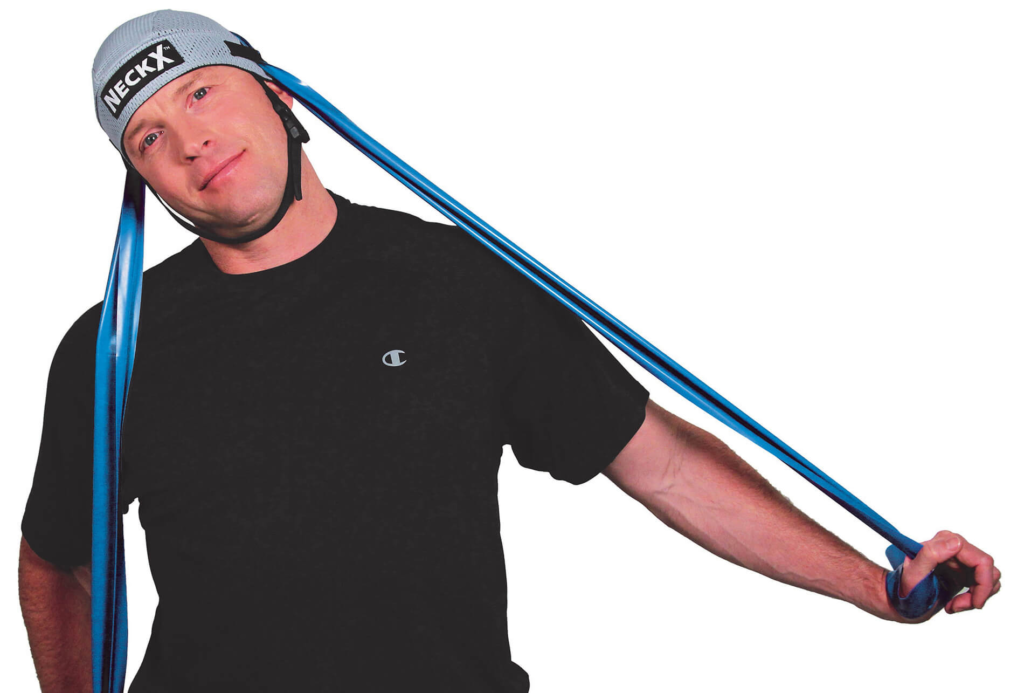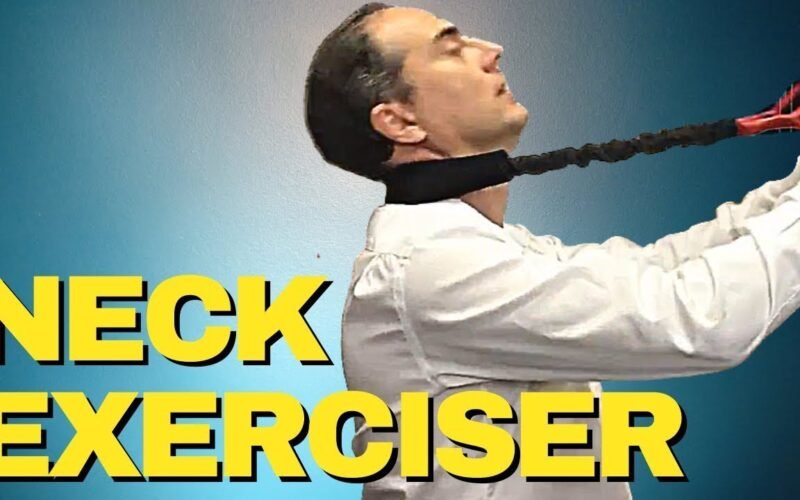While doing exercise, we often neglect neck athletic training without knowing that neck exercise is vital to our overall body strengthening. We must train this joint because it is one of our bodies’ most crucial connections. That is why A good neck exerciser is very important for muscles development and to strengthen neck muscles and to make them stronger.
Why is neck exercise important?
Numerous advantages come from neck muscle development, including:
- Enhances the body’s communication with the brain.
- Enhances breathing.
- Enhances posture.
- Enhances balance and coordination.
- Aids in injury prevention.
- Prevent neck and back discomfort; eases stiffness and tension.
- Any good neck exercise can contribute to better mental health.
What is neck training, and who should do it more often?
Neck training is precisely what it looks like: performing exercises to increase your neck’s strength, stability, and range of motion. Many believe that working out their body is solely about becoming stronger, but that is only one aspect. Additionally, it would be best if you actively worked to increase your range of motion and mobility while simultaneously strengthening your capacity for load stabilization. Anyone, from professional athletes to regular people, can benefit from neck training. Neck training can help athletes perform better in their particular sports, including football players, boxers, wrestlers, and martial artists. These athletes must have strong necks since doing so can help prevent neck injuries like whiplash, which can happen in contact sports.
Who should avoid doing neck training?
Anyone with a history of neck discomfort, injury, or instability should refrain from neck exercises. This includes persons who have degenerative disc disease, cervical spine arthritis, or any other ongoing neck conditions. Additionally, it’s crucial to refrain from neck exercises if you’ve just undergone neck surgery or had an injury, as the muscles and ligaments may still be healing.
Furthermore, neck exercises should not be performed by anyone who has ever experienced migraines, vertigo, or other neurological issues.
Neck exercisers for neck training
Neck exercises are important in neck training as they maintain the right posture. Some of the top-neck exercisers are mentioned below.
Head Harness Neck Exerciser
Using a head harness and resistance band system of progressive strengthening, the Head Harness Neck Exerciser builds neck muscle strength. A complete harness or head strap kit is available for the rehabilitation of injuries or to strengthen your neck to withstand the negative effects of working at a desk job or computer all day. The Kits are fully equipped with a door mount and the first level tube (Burgundy 1.5 To 4.5 Lbs Resistance).

Neck Exercise Tubing
The modular neck exercise tubing upgrades in strength for the head harness exerciser to train the neck muscles with progressive resistance. The system uses sturdy, color-coded modular tubing to safely and effectively strengthen neck muscles. The tubing has a single, 2-foot section and strong fittings. Plastic Makes Up the Standard Tube Clip Ends. Blue and Black, which Have a Higher Resistance, Use Metal. Has natural rubber in it.
Burgundy Tube Included With The Head Harness Neck Exerciser (1.5 – 4.5 Lbs Resistance). You can advance to new levels of strengthening if and when ready. Before advancing to higher strength levels, we advise using the Burgundy Tube for 4 to 6 weeks. Otherwise, adhere to your doctor’s or therapist’s recommendations. The head harness and door mount included with the full modular neck exercise kit are still used; this is only for the tubes.

Neck Exerciser
The neck exerciser helps strengthen the neck and upper back’s main muscles, frequently resulting in considerable improvements to posture and long-lasting pain relief.
Removable handles and a sturdy, light design make storing and transporting simple. Forward flexion to tone and thin the under-the-chin area of the neck.

How does a neck exerciser work?
With practice, the tightness of the neck strap can be raised. Tighten the strap by pulling it toward the buckle. The main muscles of the neck and upper back are strengthened through various workouts that are performed against the exerciser’s resistance. A progressive reshaping of the neck and upper back, which are essential components in restoring appropriate neck curvature, is made possible by this unique combination of concurrent stretching and exercise. Benefits may be felt immediately or within two or three days of utilizing the neck curve exerciser in cases of common neck pain, weakness, strain, and exhaustion.
Improvement is often felt after about 3 to 4 months of consistent use in cases where the goal is to restore the neck curve. Ten minutes of daily activity is sufficient for the neck curve to be restored or noticeably improved, 10 minutes of daily activity is sufficient.
Benefits of using neck exerciser
With focused and precise biomechanical benefits for the muscles and ligaments of the neck, it is an excellent rehabilitation tool for restoring healthy neck curvature. Along with the upper back and shoulder muscles, it actively balances the link between the lower neck and upper back. It can be used to exercise the neck extensors and flexors, which enhance neck posture and function, reduce headaches, and relieve chronic neck discomfort.
It is believed that cervical extension against resistance is an effective exercise for treating neck pain. The neck exerciser strengthens the muscles in the neck and upper back, increases cervical spine flexibility, increases joint lubrication and range of motion, increases blood flow to the vital discs, and decreases stress and spasm in the neck and upper back muscle groups, all of which help to reduce pain and tension headaches, neck strain, and stiffness as well as increase mobility.
It was primarily designed to perform two tasks:
- Restore the neck curve
- And strengthen the cervical spinal column. But many people with common neck aches and pains, especially those who spend a lot of time sitting at a desk or using a computer, will undoubtedly benefit.
A 2016 study published in the Journal of Physical Therapy Science found that patients with a straight or military neck benefited greatly from cervical spine flexibility and exercise. Significant improvements were made in the range of motion and cervical spine alignment.
The bottom line
Finally, neck exerciser should be considered a crucial component of general physical health and well-being. It enhances breathing and posture, enhances brain-body communication, helps prevent injuries, lessens back and neck discomfort, and relieves tension and stiffness, among many other advantages. Athletes can benefit greatly from neck training to prevent neck injuries.
The physical exercises needed to restore the cervical curve are usually quite taxing, and like any fitness program, they should be introduced gradually. It is advised that those with cervical spine instability or spines with extensive degenerative changes use this product only with their doctor’s permission. As with any therapy, caution must be exercised. If the indications and symptoms worsen, the routine must be stopped, and a medical expert should be contacted.
Frequently asked questions
What mistakes do people make when training their necks?
- To get the most out of any exercise, your neck muscles need to be warmed up. This might help you avoid injuries and make the most of your workout. You can warm up by conducting modest cardiovascular exercises or gently stretching your neck.
- Exercises for the neck should be performed with good form.
How often should you train your neck?
Start slowly and progressively increase the intensity and frequency of your workouts if you are new to neck training. With a minimum of 48 hours between workouts, you should exercise your neck twice a week. As usual, it is wise to also speak with a health expert about this.
What are the best neck training methods?
Your objectives will determine the best neck exercise techniques. The best workouts for building strength and size use resistance, including weighted neck bridges, neck curls, and neck extensions. Exercises emphasizing stretching and mobility are the ideal choice to enhance your posture and lessen neck pain. The neck bridge is a fantastic choice. You raise your hips after lying on your back with your knees raised. The next step is to support your weight by standing on your toes and the crown of your head. Holding this position will keep your shoulders and back from touching the floor.

